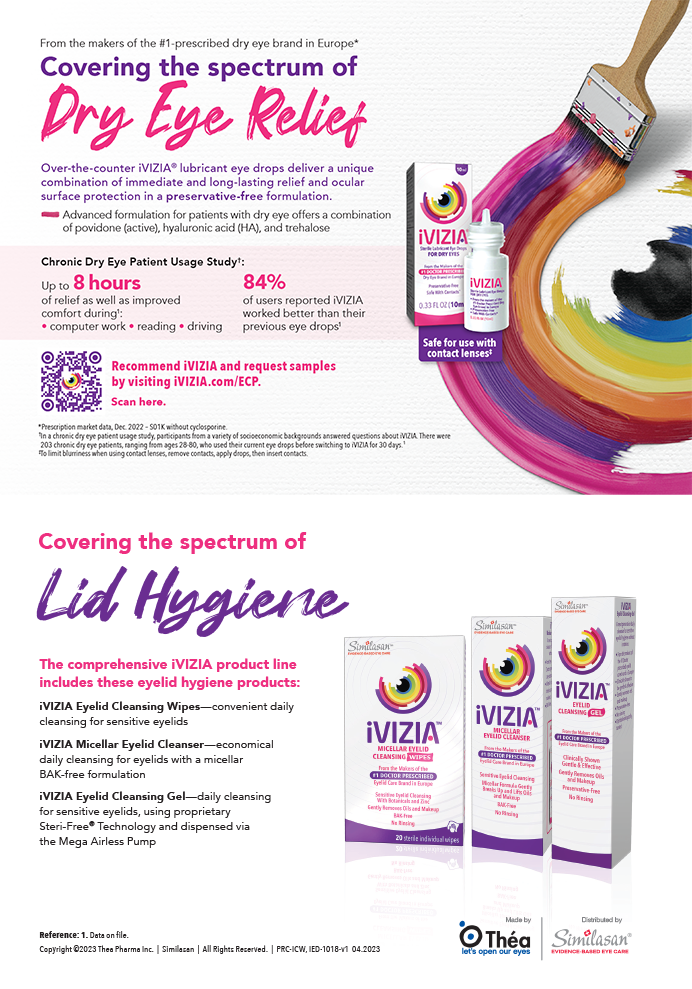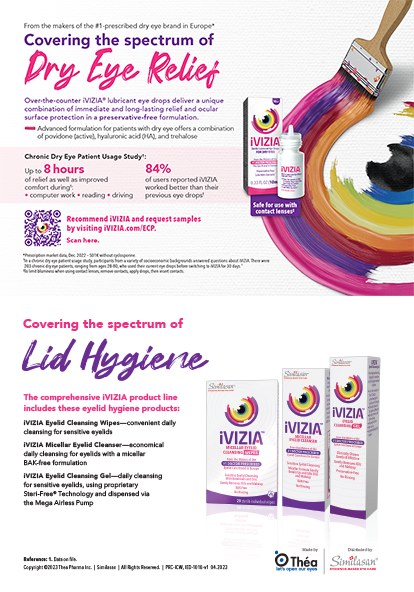Subincisional cortex, the little crack in the sidewalk, is not typically a problem in routine cases, but it certainly has the ability to trip you up before you exit the eye. For the overwhelming majority of surgeons, aspiration remains the mainstay of cortical removal, whether with a bimanual system, curved aspiration cannulas, or with the latest contender, the silicone aspiration tip.
Compared with most surgeons, I take an entirely different approach to cortical removal. I use a J-cannula to irrigate the cortex out of the capsule and (usually) out of the eye. In its simplest form, the irrigation dislodges the subincisional cortex for easy aspiration from the anterior chamber. Ultimately, I find it is capable of clearing cortex from the eye in as little as 15 seconds with only 5 to 10 mL of BSS (Alcon Laboratories, Fort Worth, TX), without my having to visualize an aspirating tip. The safety of this technique is remarkable; I have now performed more than 2,500 cases in 6 years without executing an anterior vitrectomy from a capsule ruptured specifically during cortical removal.
TECHNIQUE
Conceptually, this technique is hydrodissecting the cortex, although a bit more vigorously and after I have removed the nucleus. I am always pleased when my standard hydrodissection completely strips the cortex from the capsule and I find nothing left to remove after phacoemulsification. Unfortunately, this does not happen nearly as often as I would like. Immediately as I pass off the phaco handpiece, a member of my staff hands me a 26-gauge McIntyre-Binkhorst J-cannula (ASICO, Westmont, IL) on a 5- or 10-mL syringe filled with BSS. I then place the tip of the cannula against the capsule and irrigate. Sweeping the tip from side to side into the capsular fornices, I strip the cortex from the capsule to swirl in the anterior chamber and many times out of the eye. If the cortex remains in the eye, it is usually completely separated from the capsule by the time my staff prepares the automated I/A.
This cortical removal technique is suitable for any amount of cortex, whether it is a complete cortical bowl stubbornly refusing to prolapse into the anterior chamber, or a few wisps remaining under the incision. The technique works for any size pupil or capsulorhexis, as the irrigation does not require direct visualization. If a nearly intact bowl is present, I puncture it with the tip of the cannula and may return with the phaco handpiece to remove larger chunks of cortex. Jeffrey Shaver, MD, of Edmond, Oklahoma, prefers to strip a small wedge of cortex opposite the incision by aspirating with the phaco tip. This simple step provides clearer visualization of the capsule to gain an access point to the corticocapsular plane for the tip of the J-cannula.
TIPS FOR PREPARATION
To take full advantage of the efficiency of the technique, have the cannulas readily available immediately after phacoemulsification. It is critical to firmly secure the J-cannula onto a Luer lock syringe so that it does not become a projectile into the eye. Inspect the cannulas initially for nicks or burrs. Although manufacturing defects are rare, it is now well recognized that capsular tears during aspiration are due to manufacturing defects in the lumen of the aspirating tip. Most importantly, I avoid aspirating with this cannula at any time. The force of aspiration that this cannula exerts is tremendous and creates unnecessary risk to the capsule.
For early attempts, I recommend using a slightly longer incision tunnel than usual and avoiding cases with significant posterior pressure. I have always used a longer tunnel with a Langerman-hinge incision and have had little difficulty with chamber stability since I have ceased using retrobulbar blocks. Finally, I strongly suggest using phenylephrine in the preoperative regimen for dilation. This agent not only provides an extra 1 or 2 mm of working pupil space, but also appears to significantly decrease the incidence of iris prolapse by moving the iris posteriorly.
FOUR STAGES
I have broken my cortical removal technique into four levels of complexity. These are the stages through which the irrigation has evolved over the last few years.
Stage 1: Dislodging Subincisional Cortex
Begin with a cooperative patient who has good dilation and a clear red reflex. Look for a region of clear capsule near the midpoint of the pupil. The hand position is virtually identical to that used during hydrodissection. Immediately after passing off the phaco handpiece, place the tip of the J-cannula under the cortex against the capsule and irrigate. The directed wave of fluid will disengage the subincisional fibers from the capsule. Even if you have not completely freed the cortex from its points of adhesion in the periphery, the cortex should have separated from the posterior capsule and will be much easier to grasp with standard I/A handpieces. Because the cortex opposite the incision is quite simple to reach with standard techniques, the surgeon can easily clear the rest without further irrigation. At this stage, it is important to be relatively gentle with the irrigation, to get the “feel,” but forceful enough to strip the cortex from the capsule.
Stage 2: Improved Safety
The next advancement relates to the force of the irrigation. With the syringe full and out of the eye, direct a stream of BSS across the room about 5 or 6 feet. Typically, when the anesthesiologist complains about getting wet, you will have the feel for the amount of pressure you can safely apply without risk of damage to the capsule. With the next few attempts, place the tip of the cannula as you have previously, but sweep it side to side against the capsule. Apply increasing pressure to the plunger of the syringe, and the subincisional cortex should start to dislodge.
The stripped cortex will present an impressive swirling in the confines of the capsular bag, but it is now completely free for aspiration in the middle of the anterior chamber. In this situation, the surgeon removes the subincisional material before the rest of the cortex, and it is no longer necessary to place an aspirating tip into an awkward region of poor visualization. While I recognize claims to the safety of silicone aspirating tips, I feel the risk and cost are too great, especially in the case of a small pupil. It will take quite a bit of practice to avoid trying to rotate the standard I/A tip toward the posterior capsule to aspirate that last bit of cortex. I still find myself tempted to rotate the tip on occasion, but I try to irrigate a second or even third time, as it will eventually strip away the cortex and prevent me from accidentally breaking the capsule.
Stage 3: Complete Cortical Dislodging
After you become comfortable with completely dislodging the subincisional material, the real efficiency of the technique can be explored by dislodging all the remaining cortex from the posterior capsule. I start by aiming the tip of the cannula into the fornices of the capsule nearly opposite the incision (Figure 1) and traversing down toward the subincisional space. With practice, the surgeon can irrigate and clear the entire capsular equator in this fashion. You can aspirate the freed cortex at this point, or, as Dr. Shaver does, you can implant the IOL and aspirate the freed cortex with the residual viscoelastic.
I have had the honor of evaluating this technique with David Apple, MD, Liliana Werner, MD, and Suresh Pandy, MD, at the Storm Eye Institute in Charleston, South Carolina. We have found that this irrigation is capable of completely removing cortical debris to the level of only a residual single layer of regenerative equatorial cells. Although I readily admit that some cortex is probably left behind on a regular basis, I am not aware of another technique that attains this level of reproducible efficiency consistently in under 1 minute. We believe that this technique may have the benefit of decreasing PCO rates by improving the routine efficiency of cortical removal.
Stage 4: Aspiration Eliminated
By this point, you will undoubtedly have observed several cases in which the cortex cleared itself spontaneously from the anterior chamber. While this was fortuitous at first, the ability to do this consistently is now my ultimate goal with irrigation. As I mentioned, the swirling cortex can be quite impressive (Figure 2). By keeping the tip of the J-cannula within the confines of the capsule, the curve of the bag will also confine the swirling cortex in this space. By simply redirecting the flow of the irrigation slightly toward the anterior chamber, and slightly depressing the lip of the incision as you irrigate, the cortex will tend to flow out of the eye (Figure 3). At this point, you can achieve complete cortical removal in the 15- to 20-second range after removing the phaco handpiece. This thoroughness is not easily achieved in every case, however. With the variability of my hydrodissection results, I typically use each of these stages in a standard operating day.
POTENTIAL PROBLEMS
The few problems that can occur with this technique involve prolapsing the iris and hooking intraocular structures with the cannula. Iris prolapse is an infrequent and incidental problem when using a well-constructed incision in the absence of posterior pressure. The limbus-based incision has improved my anatomic entry away from the base of the iris, and transitioning away from retrobulbar anesthesia has significantly reduced posterior pressure. When iris prolapse does occur, I still attempt to dislodge the subincisional cortex with the J-cannula. In these cases, I will be very gentle with the irrigation, and
I use the shaft of the cannula to keep the iris as well positioned as possible. Typically, I follow up with standard aspiration techniques after implanting or even rotating the IOL to clear the cortex.
Although hooking the internal incision is quite common, it has never presented a problem. Hooking the iris and open edge of the capsulotomy is much less common, and tends to occur with shallowing of the chamber and/or depletion of the irrigating fluid. On rare occasions, I will have to reform the anterior chamber with BSS or viscoelastic from the side port to free the J-cannula.
Surprisingly, the irrigation can be quite vigorous and still remain safe to a damaged capsule. I have videotaped cases in which single occult radial tears were present in the capsulorhexis. I have unknowingly irrigated vigorously, directly in line with the tear, and have yet to see a tear extend due to the irrigation alone (one example is shown on the enclosed CD-ROM). I was quite surprised by this finding, but it goes hand-in-hand with my observations of improved safety with this technique. Alternatively, if I am aware of a radial tear, or if I use a can-opener capsulotomy, I significantly decrease the force of my irrigation.
OVERALL BENEFITS: ANGST REDUCTION
It is difficult for me to decide which is the best motivating factor for using this technique: speed or safety. I have always tried to make both points when discussing the irrigation, including the minimal amount of BSS required to remove the cortex. The J-cannula is probably the most inexpensive item on my surgical tray, and it fits neatly into any surgical regimen to stage any method of cortical removal. For small pupil cases, I would not trade this instrument for anything.
The author thanks Jeff Shaver, MD, of Edmond, Oklahoma, and William Clifford, MD, and Luther Fry, MD, of Garden City, Kansas, for their support in advancing this technique.


